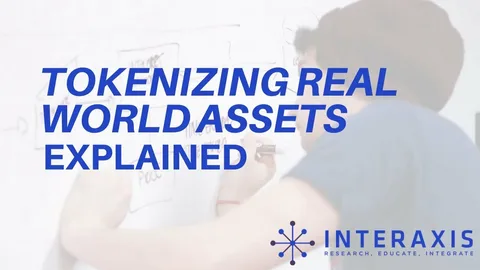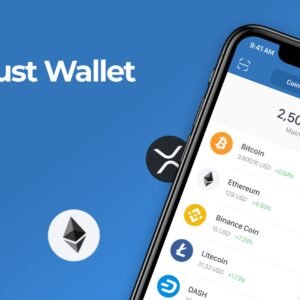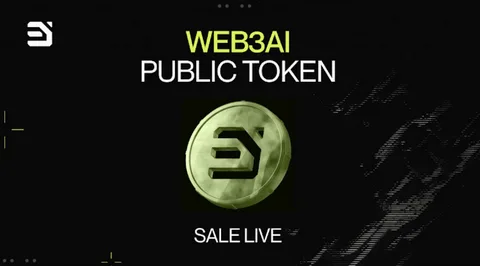Introduction
The world of blockchain is expanding rapidly, with tokenized assets becoming a critical pillar of future financial ecosystems. Among the many platforms facilitating this revolution, the XRP Ledger (XRPL) stands out for its efficiency, scalability, and innovative approach to asset tokenization. Experts predict that the value of tokenized assets could reach $16 trillion by 2030, and if this is fully realized on the XRP Ledger, the price of XRP could soar to $307.69.
This blog post explores how this ambitious valuation might unfold, diving into the key aspects of tokenized assets, the unique advantages of the XRP Ledger, and the mechanisms that could drive this dramatic price increase.

Tokenized Assets: A Revolutionary Concept
What Are Tokenized Assets?
Tokenized assets are digital representations of real-world assets such as stocks, bonds, real estate, or commodities, securely recorded on a blockchain. By leveraging blockchain technology, these assets become highly liquid, divisible, and accessible to a broader audience, eliminating traditional barriers to entry like geographic restrictions or large capital requirements.
The assets introduce unparalleled transparency, security, and efficiency in asset management. By 2030, analysts project the total market for tokenized assets could grow to an astounding $16 trillion, driven by increasing adoption among financial institutions and individual investors.
Why Tokenized Assets Matter for XRP
The XRP Ledger was specifically designed to excel in high-speed, low-cost transactions, making it the ideal platform for tokenizing assets. The XRPL’s native capabilities, such as decentralized exchange functionality and the issuance of stablecoins or other tokens, set it apart from competing blockchains. By facilitating the tokenization of assets, the XRP Ledger could attract an influx of institutional and retail users, further cementing its dominance in the blockchain ecosystem and significantly driving up the value of XRP.
The XRP Ledger: A Superior Platform for Tokenization
Key Features of the XRP Ledger
The XRP Ledger is renowned for its unique features that make it the optimal choice for hosting tokenized assets:
- Transaction Speed: Transactions on the XRP Ledger settle in approximately 3-5 seconds, making it one of the fastest blockchains available.
- Low Costs: The minimal transaction fees (fractions of a cent) ensure the cost-effectiveness of token transfers.
- Energy Efficiency: Unlike energy-intensive blockchains like Bitcoin, the XRPL utilizes a consensus mechanism requiring significantly less computational power, aligning with global sustainability goals.
Tokenized Assets on the XRPL
The XRP Ledger supports token issuance through its robust tokenization feature. This means that financial institutions can issue stablecoins or tokenize various assets directly on the XRPL. The system’s decentralized exchange (DEX) functionality allows users to trade tokenized assets without needing a third-party intermediary, further enhancing accessibility and liquidity.
Bridging Real-World Assets with the XRPL
Real-world asset tokenization on the XRP Ledger has the potential to revolutionize global markets. Whether it’s tokenized real estate, tokenized stocks, or even central bank digital currencies (CBDCs), the XRPL can accommodate all these assets efficiently. As these use cases mature, the network’s demand could skyrocket, potentially increasing XRP’s valuation.
How Tokenized Assets Could Push XRP to $307.69
Market Demand for Tokenization
A $16 trillion market for tokenized assets by 2030 represents a monumental shift in the financial landscape. The XRP Ledger is well-positioned to capture a significant share of this market due to its technical superiority. If 10-20% of these assets are tokenized on the XRPL, the network’s total value could rise exponentially.
As the adoption of such assets grows, so too will the utility of XRP. XRP is the native currency used to pay for transaction fees on the XRPL. Greater activity on the ledger will naturally increase demand for XRP, driving its price upward. Additionally, speculative investment driven by confidence in the platform’s growth could amplify this price increase.
Calculating XRP’s Potential Price
To estimate XRP’s potential value of $307.69, one must consider both the anticipated market capitalization of such assets and the demand for XRP itself:
- Network Utility: As the XRP Ledger hosts more tokenized assets, network usage will increase, requiring users to hold XRP for transactions.
- Scarcity: XRP’s fixed supply of 100 billion tokens creates a deflationary effect as demand rises.
- Institutional Adoption: As banks and financial institutions adopt the XRP Ledger for tokenized assets, their participation will significantly bolster XRP’s valuation.
With a potential $16 trillion in the assets on the XRPL, even a fraction of this market capitalization would exert substantial upward pressure on XRP’s price, making the $307.69 target feasible.
Challenges and Opportunities
Potential Barriers to Adoption
While the future of tokenized assets on the XRP Ledger is promising, several challenges must be addressed:
- Regulatory Uncertainty: Governments around the world are still formulating regulations around blockchain technology, and adverse rulings could hinder growth.
- Competition: Other blockchains, such as Ethereum and Solana, are also vying for dominance in the asset tokenization space.
- Institutional Hesitation: Many traditional financial institutions remain cautious about adopting blockchain solutions due to concerns over security, scalability, and integration.
Opportunities for Growth
Despite these challenges, opportunities abound:
- Regulatory Clarity: As governments develop clearer guidelines, institutional adoption of the XRPL is likely to increase.
- Partnerships: Ripple’s ongoing partnerships with financial institutions worldwide position the XRP Ledger as a leader in tokenized asset management.
- Technological Advancements: The continuous development of the XRPL ensures it remains a competitive and reliable platform for tokenization.
By capitalizing on these opportunities, the XRPL can solidify its role as a leader in the $16 trillion tokenization market, driving further demand for XRP.
Conclusion
The rise of tokenized assets is transforming the financial landscape, with the potential to unlock $16 trillion in value by 2030. The XRP Ledger is uniquely positioned to capitalize on this opportunity, thanks to its speed, efficiency, and innovative features. As more assets become tokenized on the XRPL, the utility and demand for XRP could surge, pushing its value to an estimated $307.69.
While challenges remain, the XRPL’s technological and strategic advantages make it a frontrunner in the race for blockchain-based tokenization. Investors, developers, and institutions should keep a close eye on this promising space.
What do you think about the potential for tokenized assets on the XRP Ledger? Could XRP realistically reach $307.69 by 2030? Share your thoughts in the comments below!






